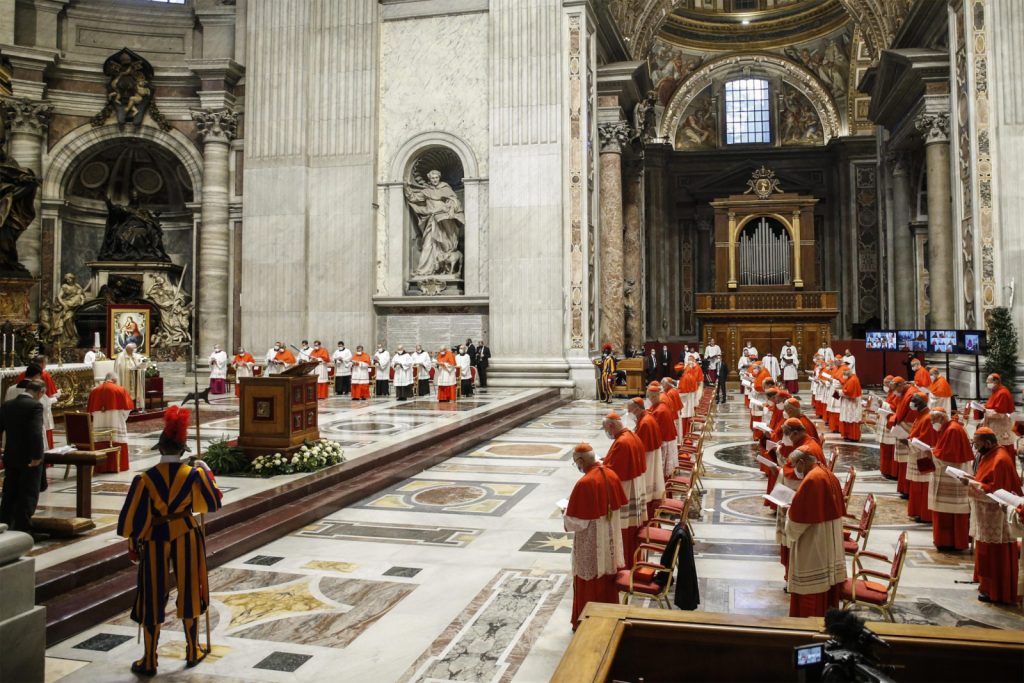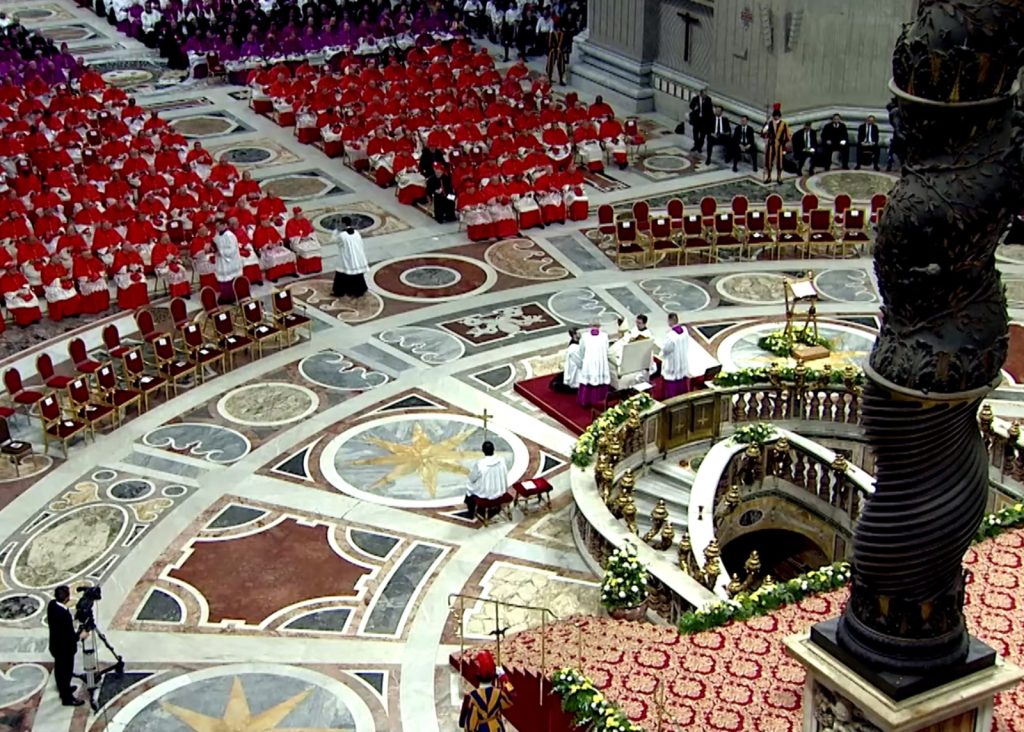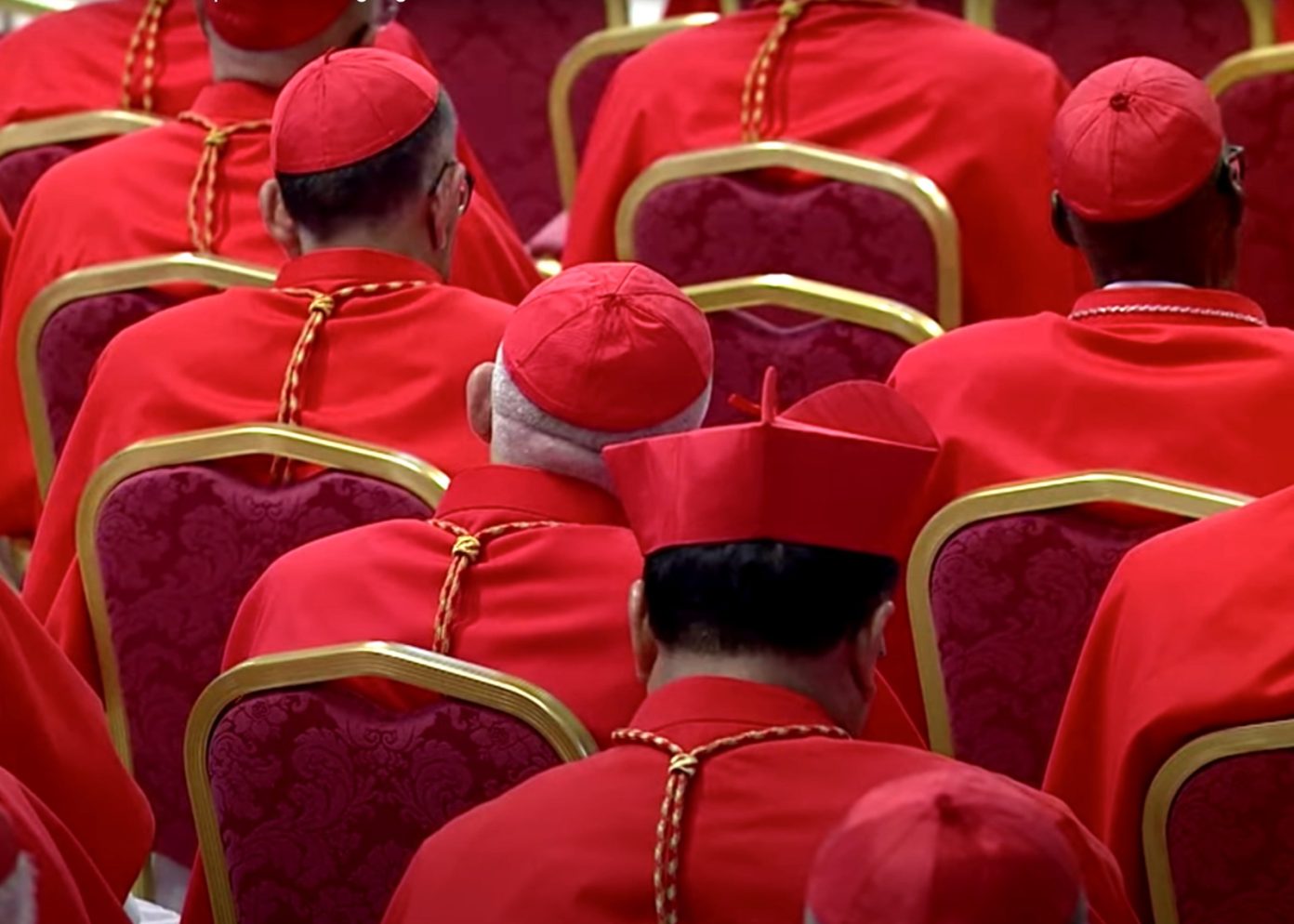There were no press conferences, reports, or sensational announcements at the end of the extraordinary consistory convened by Pope Francis to discuss the reform of the Roman Curia.
197 cardinals from all over the world came to participate. One of them, the new Ghanaian Cardinal Richard Bawoobr, was unable to attend because he was hospitalized.
All participants received a text written by Bishop Marco Mellino, secretary to the Council of Cardinals. Unfortunately, however, they did not have a plenary discussion, and the time for debate was limited.
The cardinals were encouraged to deliver a report or to provide a written text if they had prepared one, which would be for the pope’s consideration.
CNA was able to view some of these texts. To respect the confidentiality of the sources, however, only indirect reference will be made to these.
Cardinals can decide independently whether or not to disseminate their point of view. However, there remains a sort of confidentiality, or in any case, restraint, which leads cardinals to consider a debate behind closed doors as deserving of discretion.
It is not about a cult of secrecy but a desire to ensure a certain level of freedom of expression.
The role of the laity
One of the most discussed topics was the role of the laity. According to the new apostolic constitution, Praedicate evangelium, the laity can also lead a dicastery. What counts is the canonical mission, attributed directly by the pope, and not the power given by the sacrament of Holy Orders.
The decision to link power to ordination resulted from the debates of the Second Vatican Council.
To avoid abuses that had occurred in the post-medieval era, where even “bishops” who were not priests existed and abbesses held territorial powers, it was decided to link the governance to the clergy, thus giving the sacramental bond a critical role.
The decision of the Second Vatican Council did not come out of the blue: John XXIII, for example, had established that a cardinal should be at least an archbishop, which is why cardinals who do not yet have episcopal dignity must be ordained bishops before taking the red beret. There they are dispensations, but they mainly concern cardinals already over the age of 80 and therefore unable to vote in the conclave.

Before the consistory, there had been various interventions on the subject. Two, in particular, had weight: that of Cardinal Marc Ouellet, prefect of the Dicastery of Bishops, and that of Cardinal Walter Kasper, president emeritus of the Pontifical Council for the Promotion of Christian Unity. The Vatican expert Sandro Magister published both.
During the Consistory, the intervention of a cardinal focused precisely on the question of episcopal potestas.
The bishop’s potestas (power) is reduced only to sacred matters and no longer to the authority given by the sacrament of Holy Orders.
In that case, the sacrament is somehow emptied of meaning: The risk, said the cardinal, is the eventual desacralization of the sacrament tout court.
“Today, the power of priests is only over sacred things, but how big is the step to a stage where even sacred questions can be entrusted to lay people?”
On the purely canonical issue, another cardinal pointed out that the same code allows the laity to “cooperate” with the government. However, the report by Bishop Mellino maintains that this cooperation must be understood as actual participation.
This interpretation might go beyond the spirit of the Code of Canon Law. The cooperation of the laity in the power of government is considered a derogation, but now it has become a possible norm. This generates, it should be noted, another problem of a hierarchical nature.
Dicasteries are also the last resort for normative questions. What happens if a dicastery goes against a bishop’s decision on an issue that pertains to Holy Orders, and a layperson leads this dicastery? How and where is the hierarchical principle of the Church in such cases in play?

The meaning of synodality
The question and meaning of synodality has also been much debated. Some cardinals from the East warned that “not everything is synodality or can be described as such.”
In this context, another subject for debate was the definition of the Curia as serving the pope and the bishops. It is impossible for the Roman Curia to respond personally to every bishop, let alone in the way it responds to the bishop of Rome.
Another concern is that such a language risks presenting the particular Churches as branches of the Roman Church, and some cardinals also see a centralization incompatible with the collegial relationship between bishops on display.
The general structure of the document was also debated.
Some argued that the Dicastery of Faith should be put first, as it was in ancient times, and others have noticed that even the use of the word “dicasteries” seems more like a concession to secular vocabulary than a real change.
The silenced cardinals
Then, there are the open criticisms, such as those of Cardinal Walter Brandmüller, 93, whose memo was published in full by Sandro Magister.
Brandmüller said the consistory was planned and organized precisely in such a way as to prevent the cardinals from speaking openly. His contribution even went so far as to propose a reform of the conclave’s rules that would allow only cardinals residing in the city to vote because only they, on this argument, are aware of the difficulties of the government of the Roman Curia.
There are also official and favorable positions, such as that of Cardinal Paolo Lojudice, archbishop of Siena, who praised the division into groups when speaking to Vatican News, saying this favors debate.
In the end, however, the extraordinary meeting between the new and old cardinals did not occur. The absence of a truly global debate has prevented cardinals from knowing the positions of their confreres. The criterion of confidentiality, and a certain intellectual honesty, will prevent the cardinals from taking precise positions.
To understand the positions that emerged, one must read between the lines of the various statements.
In the background, there remains another risk, never really explicit: that the college of cardinals was treated, in the end, above all as an electoral body. It is a risk revealed in Brandmüller’s handwritten report, which notes how the current situation allows for forming consortiums that can influence a possible conclave.
So, debates did take place, but only in the language group, and they continued with the production of notes for the pope to read. However, the reform of the Curia is already promulgated and in action. Therefore, the cardinals could have no consultative power over it.
Andrea Gagliarducci is an Italian journalist for Catholic News Agency and Vatican analyst for ACI Stampa. He is a contributor to the National Catholic Register.







